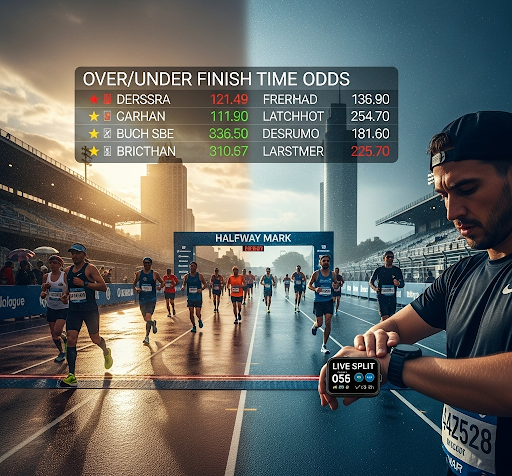People’s interest in buying a meme crypto during its presale lies in predicting its future trajectory. Maxi Doge enthusiasts are making calculated decisions based on projected market performance. This foresight is strikingly similar to the analytical mindset needed when betting on over/under finish times in running events, where success hinges on dissecting performance metrics and external variables. Over/under bets on finish times require precision and a deep understanding of factors influencing race outcomes.
Analyzing Historical Performance Trends
When it comes to over/under finish time betting, particularly in individual sports like athletics, swimming, or cycling time trials, the cornerstone of successful wagering lies in a detailed and nuanced analysis of an athlete’s historical performance trends.
Key metrics such as split times, personal bests (PBs), and seasonal bests (SBs) form the foundation of this analysis.
Split Times (Split Times)
Split times provide insight into how an athlete distributes their effort across different segments of a race, which is particularly useful in endurance events or courses with variable terrain.
Personal Bests (PB)
Personal bests, while valuable, need to be contextualized, an athlete’s lifetime PB might not be reflective of their current form, especially if it was set several seasons ago.
Environmental Conditions as Performance Influencers
Weather plays a significant role in running event outcomes. High temperatures, humidity, or unexpected rain can all slow down runners, impacting their ability to meet expected finish times.
Bettors who incorporate weather forecasts into their betting models gain an edge in predicting whether athletes will finish above or below the set times.
Pacing Strategies and Race Dynamics

While an athlete’s raw ability and personal bests are important indicators, how they choose to distribute their effort throughout a race can dramatically influence whether they finish over or under a posted timeline.
Applied Strategies by each Participant
Some competitors favor a front-loaded strategy, starting aggressively with the intent of building an early lead or banking time against fatigue. These athletes often rely on their ability to endure a drop-off in pace later in the race, hoping their early gains will be sufficient to secure a strong finish. While this approach can produce fast times under ideal conditions, it also carries a higher risk of blow-up if the athlete overestimates their stamina or misjudges race conditions.
Other athletes specialize in negative splits—a pacing tactic where they deliberately start conservatively, maintaining a controlled effort through the early stages, and then accelerate in the latter half of the race.
Impact of Competition and Race Tactics
The level of competition can either push runners to faster times or result in tactical races where pacing slows down. Championship races, in particular, often involve strategic maneuvering rather than outright time trials. Bettors must consider the race context, whether it’s a record-attempting event or a tactical championship bout.
Adjusting Bets Based on Live Split Updates
For longer-distance events, some sportsbooks offer live over/under adjustments based on split times at various race intervals. Bettors who track these updates can recalibrate their expectations and make informed in-play betting decisions, seizing opportunities as race dynamics unfold.